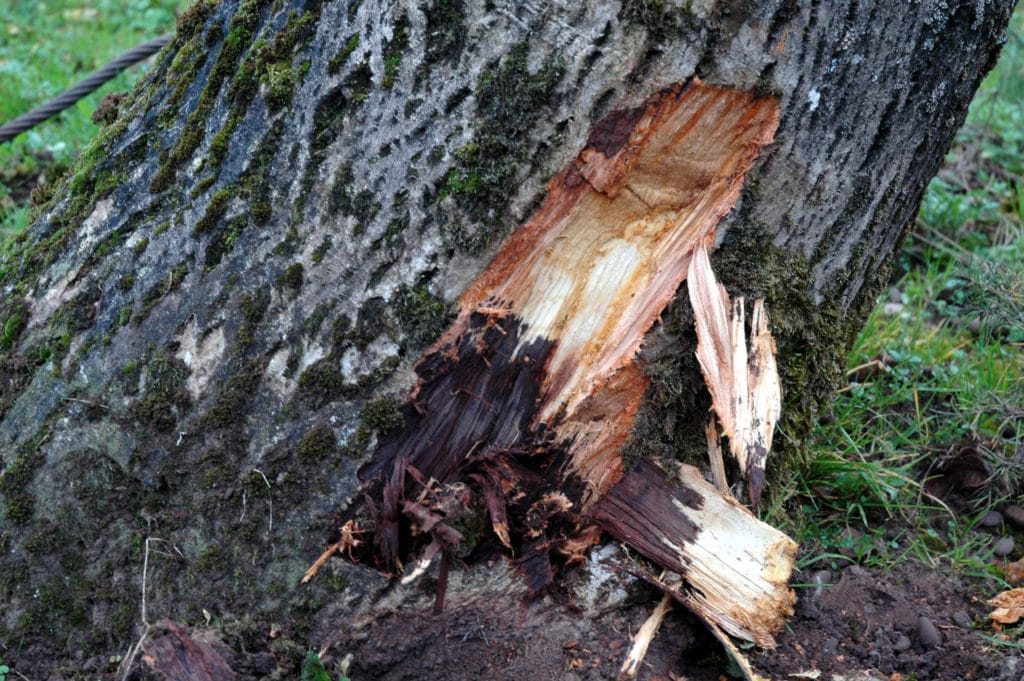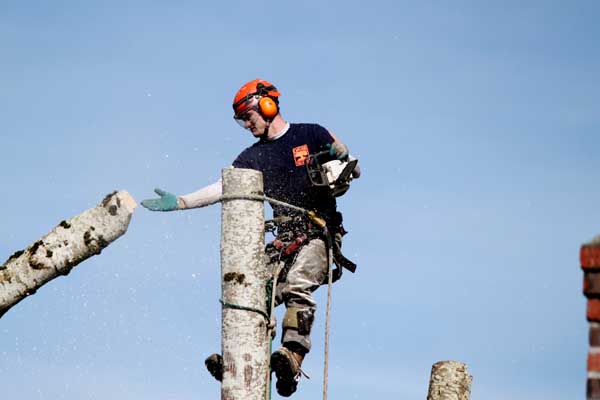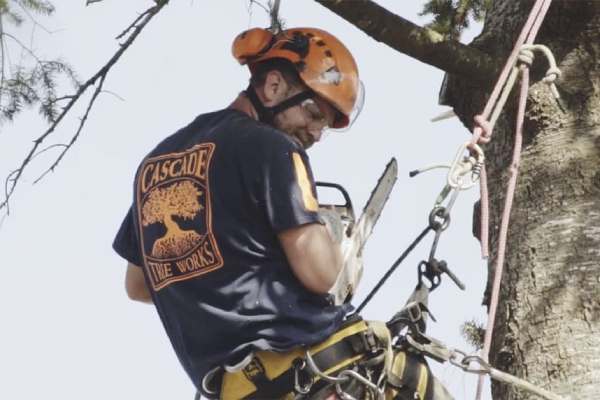Living in the Pacific North West, we definitely have a lot to appreciate, including nature. One thing we’re not lacking up here is trees, and with all those trees some will inevitably need to be removed for one reason or another. Removing trees might seem like a simple task. At a bare minimum all you need is an axe, right? There’s definitely a good deal of planning, precautions and expertise that go into it. Some of these you are no doubt aware of, but other hazards aren’t necessarily so obvious at first glance.
The Dangers of Tree Removal & Precautions to Take
One of the first major aspects to consider with tree removal is the tools involved. Using chainsaws, wood chippers and other power or hand tools requires for the job can quickly turn a good day into a bad one if something goes wrong. With even the smallest distraction a chainsaw or axe can inflict serious damage to hands, arms and legs in just a matter of seconds. Tree removal experts use these tools on a daily basis and unfortunately sometimes even they get hurt. Not having the expertise or experience can increase your likelihood of an injury.
The second major aspect to consider with tree removal is the process of removing the tree. Surprisingly there is a long list of dangers associated with trees. Without the proper harness, suspension and protective equipment, people run the risk of falling from the tree and sustaining a serious injury. Making matters worse, even with the proper equipment, weak limbs could give way resulting in a fall. In addition, it is very important to be aware of the area surrounding the tree. Close proximity to electrical power lines could present a serious problem. If working near a power line someone could slip and fall onto the line or accidentally hit the line with their equipment and risk getting electrocuted.
The third major aspect to consider is the tree. Some trees could be home to poisonous insects and plants. Tree professionals typically wear heavy duty work gloves and other protective equipment when scaling trees. Trees can also have poisonous chemicals or contaminants on them. For this reason the trees need to be carefully and thoroughly inspected before taking them down. OSHA outlines various regulations when dealing with hazards like these.
The fourth major aspect to consider is the condition of the tree, specifically when working with rotting wood or deadwood. If the tree is in the process of dying, it can be very unstable and fall in an unpredictable way. In addition, these types of trees often have hollow trunks or unstable limbs that make using regular power tools risky. Frequently the best way to get a dead tree removed is to lift it out using a crane. If you start seeing signs of rot, don’t wait any longer to get it removed.

Tree with Root Rot
The final aspect of tree removal to consider is when the tree comes down. Unfortunately, trees don’t always fall the way others would expect. Quite often falling trees damage houses, cars, crash into power lines and hurt other people. Tree removal professionals go through a careful process. This includes preparing the space, cutting the correct indentations into the tree and attaching cords to help direct the way it will fall.
As you can see tree removal can be quite the process. There is the potential of many different outcomes that stem from a range of variables. Sometimes it can be hard to prepare for all the potential issues, and this is where experience really helps. Many have been through the trial and error process and have been injured along the way so you don’t have too! If you’d like an estimate for tree removal services just reach out, and stay safe!




